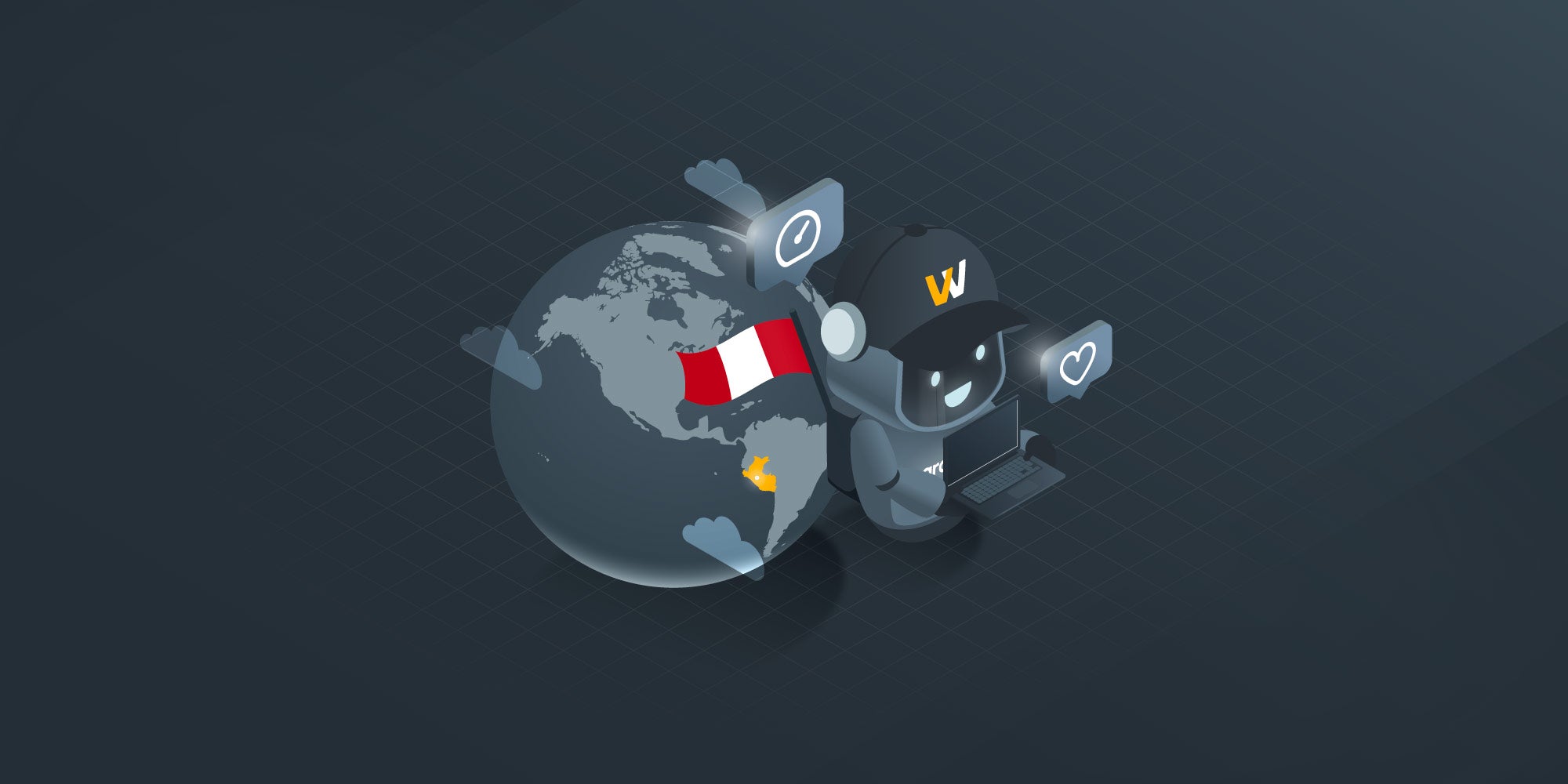IT offboarding checklist and tips to save time with employee turnover
 GroWrk Team
GroWrk Team
Offboarding is one of the most overlooked stages of the employee lifecycle—but it’s one of the most critical for protecting company data, ensuring compliance, and maintaining operational continuity.
Yet most companies don’t get it right.
According to a 2022 report by Beyond Identity, 83% of IT professionals report that former employees still have access to company systems after leaving. That’s a massive liability—one that can lead to data breaches, compliance violations, and reputational harm.
This guide will explain the importance of structured offboarding, the risks of skipping it, and how to develop a secure and scalable process, particularly for distributed teams.
Key takeaways
-
A structured IT offboarding process enhances security, mitigates risks, and fosters positive relationships with departing employees.
-
Neglecting offboarding can lead to data breaches, unauthorized access, and compliance violations, emphasizing the need for systematic procedures.
-
Managing an employee's access to various systems during offboarding is crucial to ensure security and maintain control over corporate data.
-
Automation in the offboarding process streamlines access revocation, asset recovery, and knowledge transfer, ensuring both efficiency and security.
Why efficient offboarding matters more than ever

Efficient IT offboarding isn’t just a nice-to-have—it’s a business-critical process that protects your organization long after an employee leaves.
Here’s why it matters:
-
Data security risks escalate quickly: Without a clear process, departing employees can retain access to sensitive systems, files, and SaaS platforms—putting your company at risk of insider threats or unintentional data leaks.
-
Compliance requirements are non-negotiable: Regulatory frameworks like GDPR, HIPAA, and SOC 2 require strict controls over data access. Failure to revoke credentials or track the recovery of equipment can lead to costly violations.
-
Delays cause operational friction: Uncollected assets, open tickets, and dangling account permissions create unnecessary work for HR, IT, and finance teams. A structured process minimizes this busywork.
-
Knowledge loss hurts continuity: When institutional knowledge leaves with the employee, teams lose momentum. Structured offboarding encompasses handoffs, documentation, and knowledge transfer to minimize disruptions.
-
Poor offboarding weakens your employer brand: A messy offboarding process leaves a lasting impression, one that impacts alumni referrals, Glassdoor reviews, and even rehire potential.
-
Offboarding volume is increasing: With the rise of remote work and high turnover, offboarding is occurring more frequently. Scaling it without automation puts your team at constant risk of mistakes.
The challenges with traditional offboarding processes

Traditional IT offboarding is often fragmented, inconsistent, and heavily manual. These gaps create major vulnerabilities that put security, compliance, and IT efficiency at risk.
Key pain points include:
-
Lingering access to systems and data: 48% of organizations still allow former employees to access internal systems after they have departed—a significant security threat.
-
Risk of data breaches: Poor deprovisioning can lead to accidental or malicious data loss. 20% of companies have experienced a data breach linked to a former employee.
-
No standardized workflow: When IT, HR, and managers aren’t aligned, necessary steps get missed—like device retrieval, SaaS deactivation, or account lockouts.
-
Scattered device returns: Without a formal recovery process, laptops and other hardware go unaccounted for, adding to financial losses and data security risks.
-
Manual processes waste IT time: Each offboarding case can eat up hours in back-and-forth coordination, increasing the workload on already stretched IT teams.
Essential steps in the IT offboarding process
A secure and efficient offboarding process isn’t just about checking boxes—it’s about protecting sensitive data, recovering assets, and maintaining operational continuity. Below are the core steps every IT team should include in their offboarding workflow:
1. Revoke system access immediately
-
Disable user accounts through your Identity Provider (IdP) or SSO platform.
-
Revoke tokens and active sessions.
-
Reset shared credentials if necessary.
Why it matters: Prevents unauthorized access and safeguards sensitive systems.
2. Deactivate SaaS accounts
-
Reclaim unused licenses to save costs.
-
Schedule account deletions based on your data retention policy.
Why it matters: Ensures compliance and minimizes shadow access risks.
3. Cut off remote access
-
Disable VPN credentials, remote desktop access, and endpoint management tools.
-
Audit activity logs for anomalies.
Why it matters: Closes off any backdoor entry points, especially for remote or hybrid teams.
4. Recover company assets
-
Initiate device retrieval with clear instructions and prepaid shipping labels.
-
Track return status and update asset inventory.
Why it matters: Recovers valuable hardware and protects intellectual property.
5. Securely wipe returned devices
-
Wipe data using NIST 800-88 or equivalent standards.
-
Generate a certificate of data destruction.
Why it matters: Prevents data leaks and ensures compliance with regulations.
6. Document everything
-
Maintain logs of offboarding actions for audits.
-
Align documentation with your compliance framework (SOC 2, ISO 27001, etc.).
Why it matters: Proves due diligence and supports risk management.
7. Capture knowledge and transition projects
-
Use project management tools to transfer responsibilities.
-
Schedule handover meetings or document processes.
Why it matters: Preserves institutional knowledge and keeps teams productive.
Handling company assets during offboarding

When employees leave, recovering company-owned devices is just as critical as revoking system access. Lost or delayed asset returns can lead to data exposure, compliance issues, and significant financial loss.
What to recover
-
Laptops and desktops
-
Mobile phones and tablets
-
Peripherals (monitors, keyboards, docking stations)
-
Security keys, access cards, and office equipment
Why it matters
-
Security: Devices may contain sensitive company data.
-
Cost control: Unrecovered devices inflate asset inventories and budgets.
-
Compliance: Asset tracking and returns are essential for audit trails.
Best practices for asset recovery
| Step | Action | Outcome |
|---|---|---|
| Maintain an up-to-date asset list | Use asset management software to track devices by user and location | No device slips through the cracks |
| Automate return workflows | Use offboarding tools or platforms like GroWrk to trigger shipping instructions | Fewer delays and missed returns |
| Schedule device retrieval early | Begin the recovery process as soon as offboarding is initiated | Increases success rate of recovery |
| Include prepaid return labels | Simplifies the process for the employee and boosts compliance | Encourages timely returns |
| Confirm condition and status | Log any damage or loss upon return | Supports insurance and replacement planning |
Don’t wait until a device is back in hand—lock it remotely and initiate a wipe if there’s any delay. Unreturned hardware should be treated as a potential breach until confirmed otherwise.
Ensuring data security and compliance
Offboarding isn’t complete until sensitive data is secured and compliance standards are met. Lapses during this phase can lead to data breaches, regulatory penalties, and long-term reputational damage.
Key areas to address
-
Access revocation: Ensure all credentials are deactivated across cloud platforms, internal systems, and third-party tools.
-
SaaS account cleanup: Close unused accounts to eliminate attack surfaces and avoid paying for inactive users.
-
Data backups and handoff: Transfer relevant data to the appropriate teams before closing accounts to preserve business continuity.
-
Legal compliance: Align offboarding procedures with GDPR, HIPAA, SOC 2, or other regional regulations depending on your industry and operating countries.
Compliance safeguards
| Task | Why it matters | Best practice |
|---|---|---|
| Disable user accounts in IdP systems | Prevents unauthorized re-entry | Use automated triggers tied to HRIS |
| Reclaim and delete SaaS licenses | Avoids security risks and cost waste | Set standardized deactivation workflows |
| Archive and reassign business data | Ensures operational continuity and legal recordkeeping | Use MDM/EDR tools to export files properly |
| Wipe and reset returned devices | Prevents data leakage from reused hardware | Follow NIST 800-88 data destruction guidelines |
| Log every step for audit purposes | Ensures traceability during compliance checks | Use a platform that provides audit trails |
Don’t assume your offboarding is compliant just because systems were deactivated. Document every step, time stamp every action, and retain certifications (e.g., proof of data destruction).
Knowledge transfer and continuity

Employees take more than just their devices when they leave—they take valuable know-how. Without a plan to transfer that knowledge, teams are left with gaps affecting productivity, customer relationships, and project continuity.
What’s at risk?
-
Lost project history: Incomplete handoffs can disrupt timelines and stall deliverables.
-
Knowledge silos: Critical workflows and institutional knowledge may vanish if they’re not documented or shared.
-
Team friction: Remaining employees may struggle to fill the gaps left behind, impacting morale and performance.
Practical steps to reduce disruption
| Knowledge area | Transfer method | Best practice example |
|---|---|---|
| Active projects | Project handoff meetings | Use task managers (e.g., Jira, Asana) to reassign and document progress |
| Institutional knowledge | Internal documentation | Encourage employees to update Confluence or Notion before exit |
| Client or vendor context | CRM updates + internal briefings | Schedule transition calls or detailed debriefs with new point of contact |
| Technical expertise | Cross-training | Rotate team members through key systems and roles in advance |
| Personal insights | Exit interview | Capture insights on what worked and what could be improved |
Start handoffs as early as possible—ideally once the resignation is confirmed. Waiting until the last week often results in rushed, incomplete transfers.
Enhancing employer brand through effective offboarding
.png?width=600&height=300&name=it%20offbaording%20(1).png)
Offboarding isn’t just about security and logistics—it’s a branding opportunity. Every employee exit leaves an impression. When done right, it can turn former team members into advocates who amplify your reputation in the market.
Why this matters
-
Future recruitment: Former employees talk. A smooth offboarding can influence how your company is perceived by potential hires.
-
Alumni engagement: Positive exits keep the door open for boomerang hires or referrals.
-
Cultural continuity: A thoughtful offboarding process reinforces the organization’s values and respect for people—even when they’re leaving.
Build your employer brand at exit
| Action | Impact | Best practice |
|---|---|---|
| Conduct meaningful exit interviews | Identify culture, process, or leadership issues | Use neutral HR reps, focus on actionable feedback |
| Provide offboarding transparency | Reduces confusion and fosters trust | Share timelines, final pay info, and access updates clearly |
| Celebrate contributions | Helps employees leave on a positive note | Team shoutouts, farewell messages, or small tokens of appreciation |
| Offer alumni network or referral programs | Encourages continued engagement post-exit | Create a simple LinkedIn group or alumni list |
| Ask for feedback on the offboarding process | Strengthens your process and shows care | Send a short survey after completion |
Tip
You spend months building employee loyalty—don’t lose it in their final two weeks. Treat offboarding as the final touchpoint in the employee experience.
How GroWrk transformed Upwork’s global offboarding process
Upwork's IT team managed employees across 30+ countries—but global offboarding had become a serious pain point. Each departure required complex coordination across regions, customs paperwork, manual follow-ups, and vendor communication just to retrieve a single device. It consumed time, delayed asset recovery, and introduced compliance risks.
Offboarding challenges at Upwork
Before GroWrk, Upwork faced:
-
Long device return times and missed SLA deadlines.
-
No centralized view of global inventory or offboarding status.
-
Manual tracking and vendor management that slowed retrievals.
-
Increased risk of lost assets and data exposure.
The GroWrk solution
GroWrk transformed Upwork’s offboarding workflow with:
-
Automated collection requests triggered by status changes in their HR system.
-
Pre-paid shipping logistics in 150+ countries, eliminating customs delays.
-
Okta integration for quick login verification and remote address confirmation.
-
Live tracking dashboards for every offboarding case, ensuring real-time visibility.
-
End-to-end chain of custody logging, helping maintain compliance.
“We just press the collection button, and GroWrk takes care of the rest.”
—Shauna MacMillan, IT Specialist, Upwork
Results That Matter
-
100% SLA compliance for device returns in GroWrk-supported countries.
-
Two hours saved per offboarding task, freeing up the IT team for higher-value work.
-
Zero lost assets and clean audit trails for every offboarding event.
GroWrk helped Upwork turn a time-consuming offboarding process into an automated, secure, and globally scalable workflow.
Traditional vs. GroWrk offboarding
|
Category |
Traditional offboarding |
Offboarding with GroWrk |
|---|---|---|
|
Speed of device recovery |
Often takes 2–4 weeks, with multiple reminders |
Average retrieval time reduced to under 7 business days |
|
Asset visibility |
Limited tracking; dependent on manual check-ins |
Real-time dashboard with global tracking of all IT equipment |
|
Workflow coordination |
Requires IT, HR, and ops to manage tasks separately |
Automated workflows triggered via HRIS/IT system integrations |
|
Chain of custody |
Manual or missing documentation |
Full audit trail with timestamps, status updates, and confirmations |
|
Compliance assurance |
Hard to prove data wipe or asset return |
Automated logging and compliance-friendly reporting |
|
Coverage for distributed teams |
Logistics complexity increases with geographic spread |
Device retrievals and logistics support in 150+ countries |
|
IT team time spent |
High — constant follow-ups and manual task completion |
Low — GroWrk manages end-to-end execution and communication through a formal procedure |
Automating IT offboarding with GroWrk
Manual offboarding workflows create risk, waste time, and frustrate employees. GroWrk replaces the spreadsheets and guesswork with a secure, automated platform that handles IT asset retrieval, access revocation, and compliance from start to finish—anywhere in the world.
Here’s how GroWrk supports modern IT offboarding:
-
Automated device retrievals
Trigger secure collection workflows directly from your HR or IT system. GroWrk coordinates pickups across 150+ countries with prepaid shipping and customs handling—no back-and-forth required. -
Certified data destruction
Ensure returned devices are wiped according to NIST 800-88 and other global standards. You'll get verifiable Certificates of Destruction to support audits and compliance documentation. -
Full audit trails and tracking
Gain real-time visibility into every offboarding event—from initial request to device recovery. Track progress, view status updates, and export logs for SOC 2, ISO 27001, and GDPR reporting. -
Okta and HRIS integrations
Automatically trigger offboarding actions like device collection or login lockouts when an employee leaves, using tools you already have in place. -
Zero-touch employee experience
Departing team members receive clear return instructions, prepaid labels, and support—so there’s no confusion, delays, or strained final interactions. -
Global scalability built-in
Whether you’re offboarding 5 employees or 500, GroWrk scales with you—delivering consistent results and eliminating the need for local logistics vendors.
Don’t let offboarding become your biggest IT risk. Schedule a demo and see how GroWrk helps you close every loop—fast, secure, and globally.
Frequently Asked Questions
Why is a structured IT offboarding process important?
A structured IT offboarding process is crucial for ensuring smooth employee exits and mitigating legal and security risks. By implementing this process, organizations can maintain stability and protect sensitive information during transitions.
What are the security risks of poor IT offboarding?
Poor IT offboarding significantly increases the risk of data breaches and the potential loss of proprietary information due to delayed access revocation and inadequate decommissioning processes. Ensuring a structured offboarding procedure is essential to mitigate these security threats.
What are the key steps in the IT offboarding process?
The key steps in the IT offboarding process include revoking system access, deactivating SaaS accounts, and managing remote access, all essential for protecting company data and ensuring business continuity. Implementing these steps diligently will safeguard your organization's information during employee transitions.
How does effective offboarding enhance an employer brand?
Effective offboarding enhances an employer brand by fostering trust and leaving departing employees with a positive experience, which can encourage advocacy and future rehires. This positive impression contributes significantly to the overall perception of the company.
How can automation benefit the IT offboarding process?
Automation enhances the IT offboarding process by ensuring consistency, streamlining tasks, and facilitating quick access revocation. It effectively manages permissions and assets, leading to a more efficient transition.






